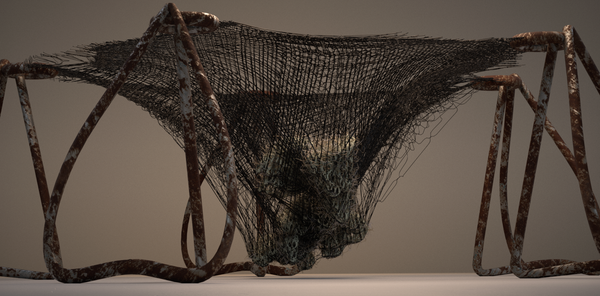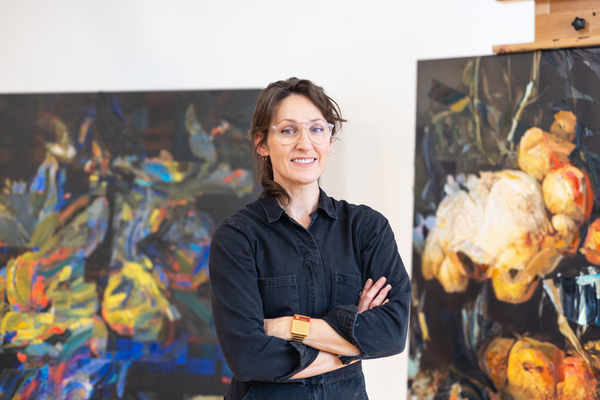The Land Art at Desert X Confronts Borders and Politics on Indigenous Territory
The second edition of Desert X is a manifesto for poetical activism, tangled between nature and urban development.
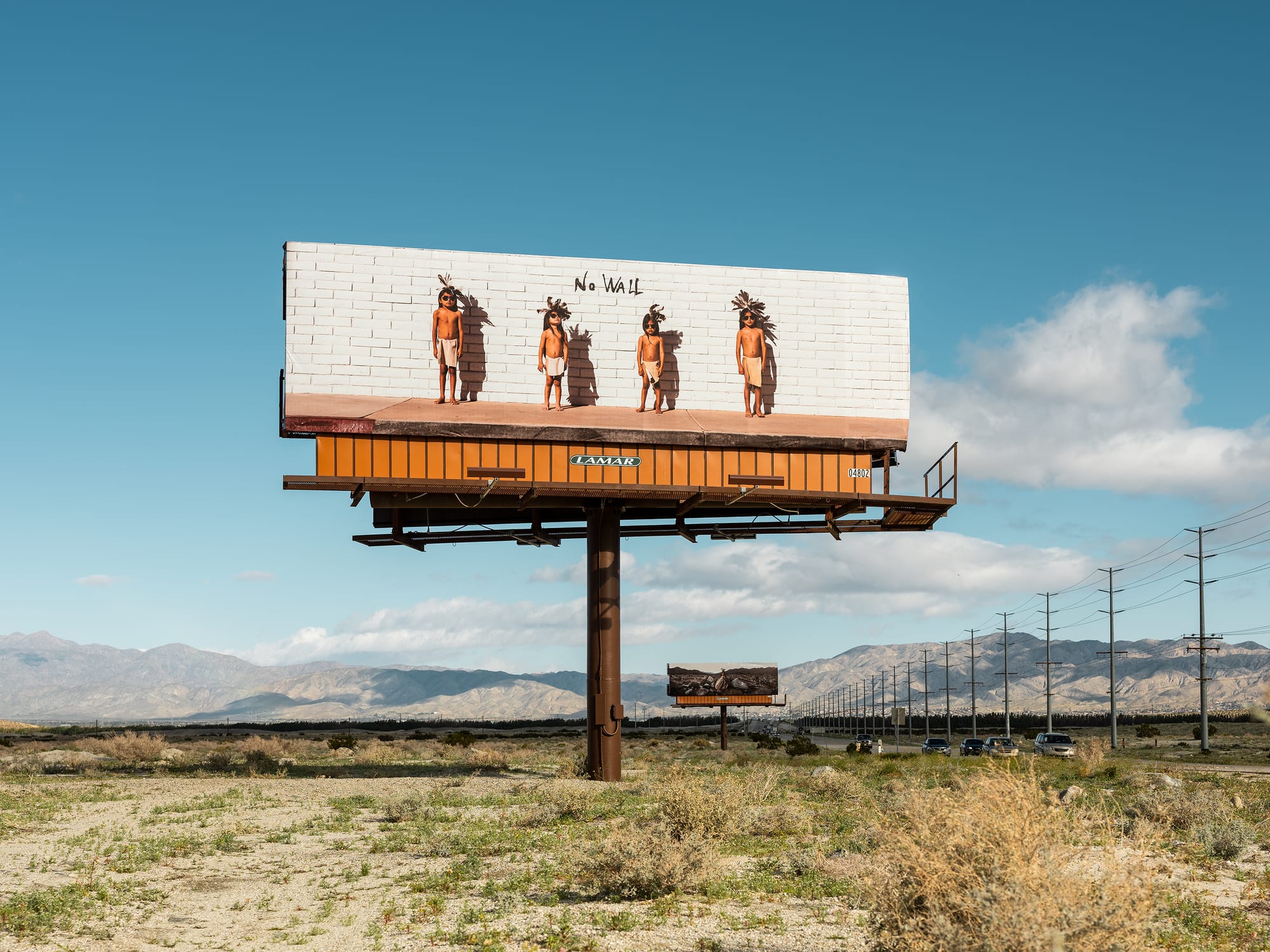
Coachella Valley, CA — A luxuriant oasis and an arid No Man’s Land. A blank canvas and the site of complicated histories. A succession of glorious mountain ranges, imposing palm trees, exotically-named resorts and strip mall fast food joints. The Coachella Valley, two hours from Los Angeles, has been inhabited by the Cahuilla Indian tribe since 5000 BCE; many of its properties still sit on Indian-owned land. The modern-day riviera was built in the 1950s for the Hollywood elite as a “playground to the stars”; they erected opulent modernist homes and signed deals at lavish parties. More recently, it’s been flooded by faux-bohemian millennials donning headdresses and fringed moccasins at the music festival. It has become a selfieland, a favored site for fashion shoots and industry parties, and a hotbed for real estate agents stealthily and successfully monetizing on liberal paradise.
The desert has also always held a mystical lure for artists, who escaped on its endless roads and starry horizons to explore the limits of civilization, esoteric practices, and the extreme conditions of nature. It is the place of radical and immaterial gestures, weirdos, and off-the-grid Hippie communes, away from saturated capitals and overhyped art fairs. Ed Ruscha, who lives between Los Angeles and his cabin in the Mojave desert, writes in Desert X’s exhibition’s catalogue:
[I]t’s a place for glorious but dried out things. Hey, is that an oasis or is that a mirage? As you move on you begin to realize that you can make the desert as mystical, as majestic and as forbidden as you want and that the solitude it produces is yours to play with.
This week, the second edition of the biennial opened under the dual themes of politics and poetics, with works that engaged with environmental catastrophes, mass migration, Indigenous rights, and architectural and industrial colonization. 19 artists explored some of the desert’s most iconic and desolate sites, creating original works instilled with stark beauty and dark truths. In Palm Springs, where the American Dream and its failure is staged in the blinding desert light, they have scratched the shiny surfaces of Americana and left marks, physical and virtual, of their reactions to an apocalyptic post-Trump world. When “building” exists as a charged project in our war of walls, mass military, and surveillance, Land Art is no longer a romantic and heroic gesture in the vastness of nature. It is by essence a political act.
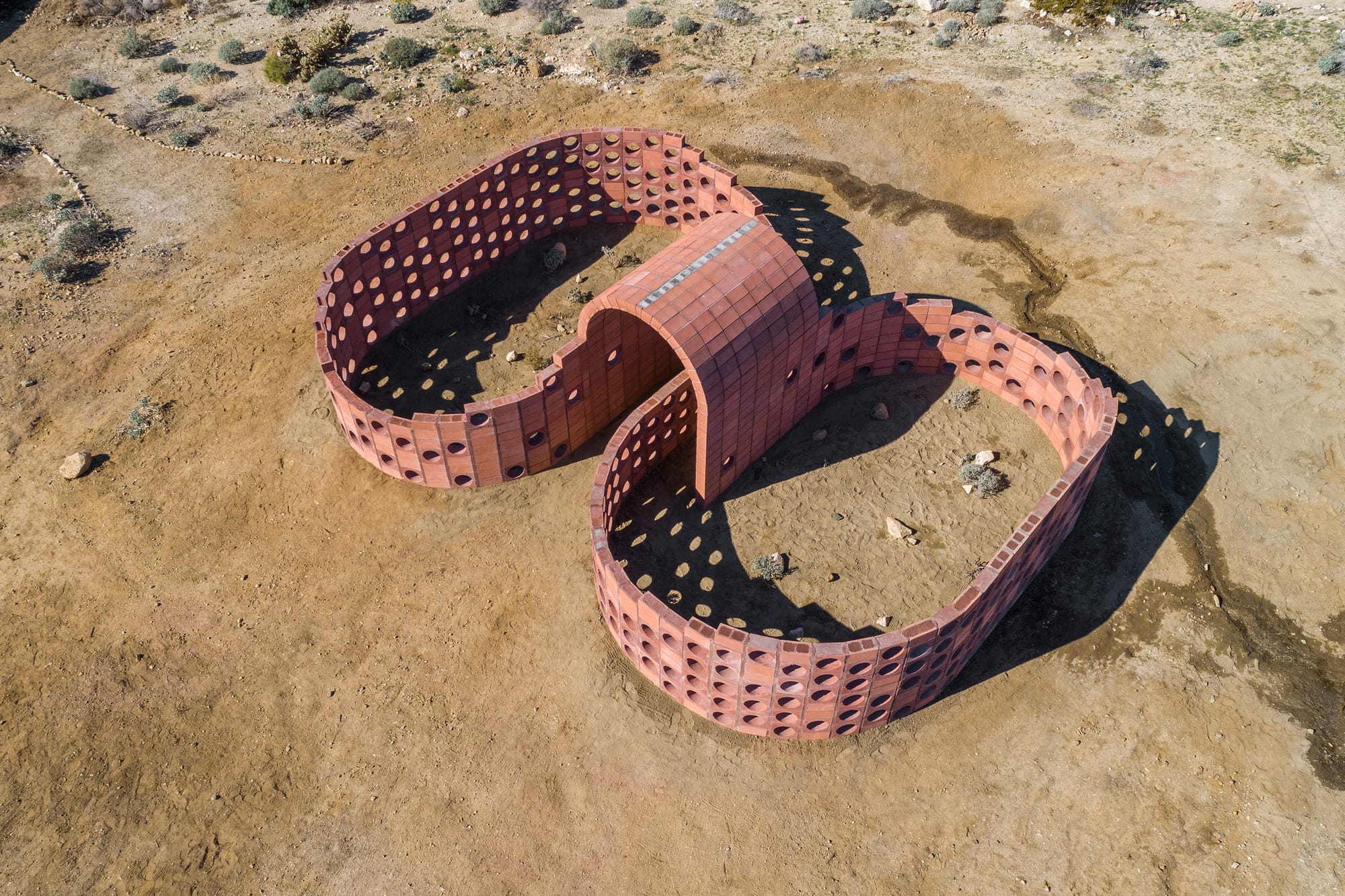
The curators are a group of young, energetic curators from distinct backgrounds and points of views. The artistic director Neville Wakefield is an art star known for his work in performance, site installations, and partnerships with fashion brands such as Supreme, Nike, and Calvin Klein. The biennial’s executive director, Jenny Gil, who is from Spain, formerly worked for Faena. The curator Amanda Hunt recently worked at the Studio Museum before joining MOCA. The LA-based writer and curator Matthew Schum was informed by his doctoral research on site-specific happenings, including the Istanbul Biennial. They have selected a broad group of artists of diverse nationalities, ages, and practices, supporting the conception, construction, and installation of each of the works. A budget of $25,000 or (much) more per work was offered by donors such as the Coachella Music Festival (which donated over $100,000) and electric car company Evelozcity. On 55 miles spread between the Wildland Park in the northwest and the Salton Sea in the southeast, the installations take the visitor on a road trip on a circuitous path of highways, windmill farms, gas stations, hot spring spas, residential compounds, and Modernist homes. The works will be up until April 21 and are accessible free of charge, alongside a series of performances and events.
At the VIP preview, it was rather ironic that the press was catapulted in the desert and shuttled between installation sites for two days of air-conditioned limo bus tours and receptions with the curators, board members, donors, and artists. The absence of the solitude, wandering, and quiet exploration that Land Art calls for made for a slightly different experience of the works; this was another art party of sorts.
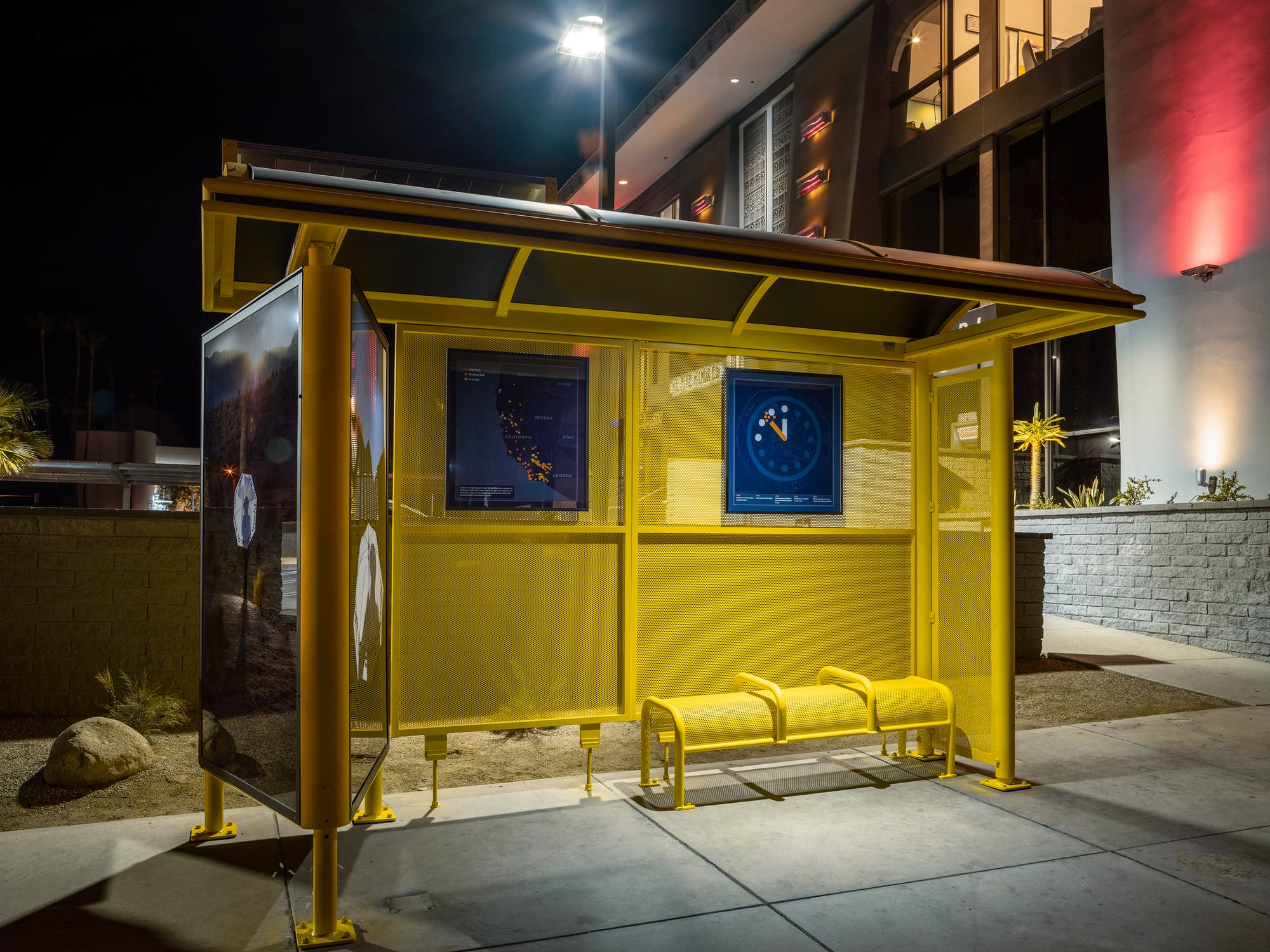
Jenny Holzer’s much-anticipated installation “Before I Become Afraid,” a central attraction of the biennial, was indefinitely postponed after the sheep of the Whitewater Preserve contracted pneumonia. But the discovery of lesser-known practices was a refreshing experience.
Mary Kelly’s “Peace is the Only Shelter” collects three yellow bus shelters reminiscent of nuclear shields in an area where extensive nuclear testing was conducted by the American military. The artist, a longtime student and proponent of the Cold War-era feminist activism of the Women Strike for Peace (WSP), filled the structures with texts from WSP and maps of nuclear test sites in the desert area.
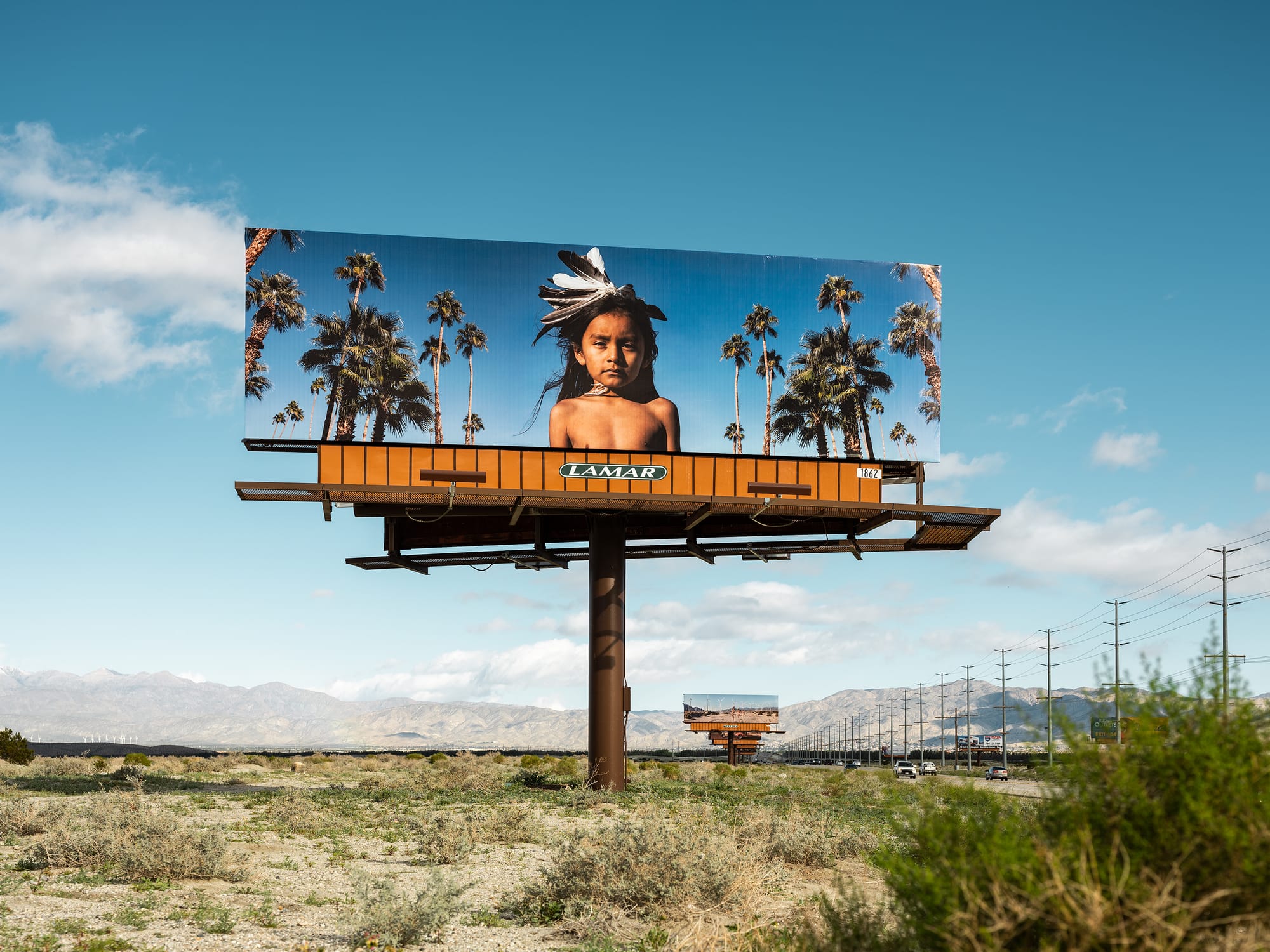
Nearby, Cara Romero, a Chemehuevi artist, mounted four billboard photographs on the highway, opposite a series of roadside advertisings. The billboards portray the images of four boys from the Chemehuevi Indian Reservation and are a memorial to the Cahuilla, Chemehuevi, Serrano, and Mojave — the original and still remaining inhabitants of the Coachella nation.

Along the highway, a massive neon orange aluminum box, planted on a plain like a UFO, is the creation of art world star Sterling Ruby. If you stared at it in the bright sun, it transformed into an intense reddish hue, like a desert sunset. Also near the freeway on a stretch of sand, Irish artist John Gerrard’s video was projected onto a large black box. It depicts a pole from which clouds of black smoke formed a flag-like shape — a digital simulation of the now-depleted world’s first major oil site in Texas, which condemns the devastating use of natural resources to build the artificial oasis of Palm Springs.
In a gesture to vanish all physical trace in the environment, Nancy Baker Cahill created an augmented reality app that reacted to the windmill farms in the north (“Revolutions”) and Salton Sea in the south (“Margin of Error”) with confetti-like explosions on phone screens aimed at the sites. It points out the toxic outcomes of unhinged developments in the area, and the hidden costs of the resort’s development.
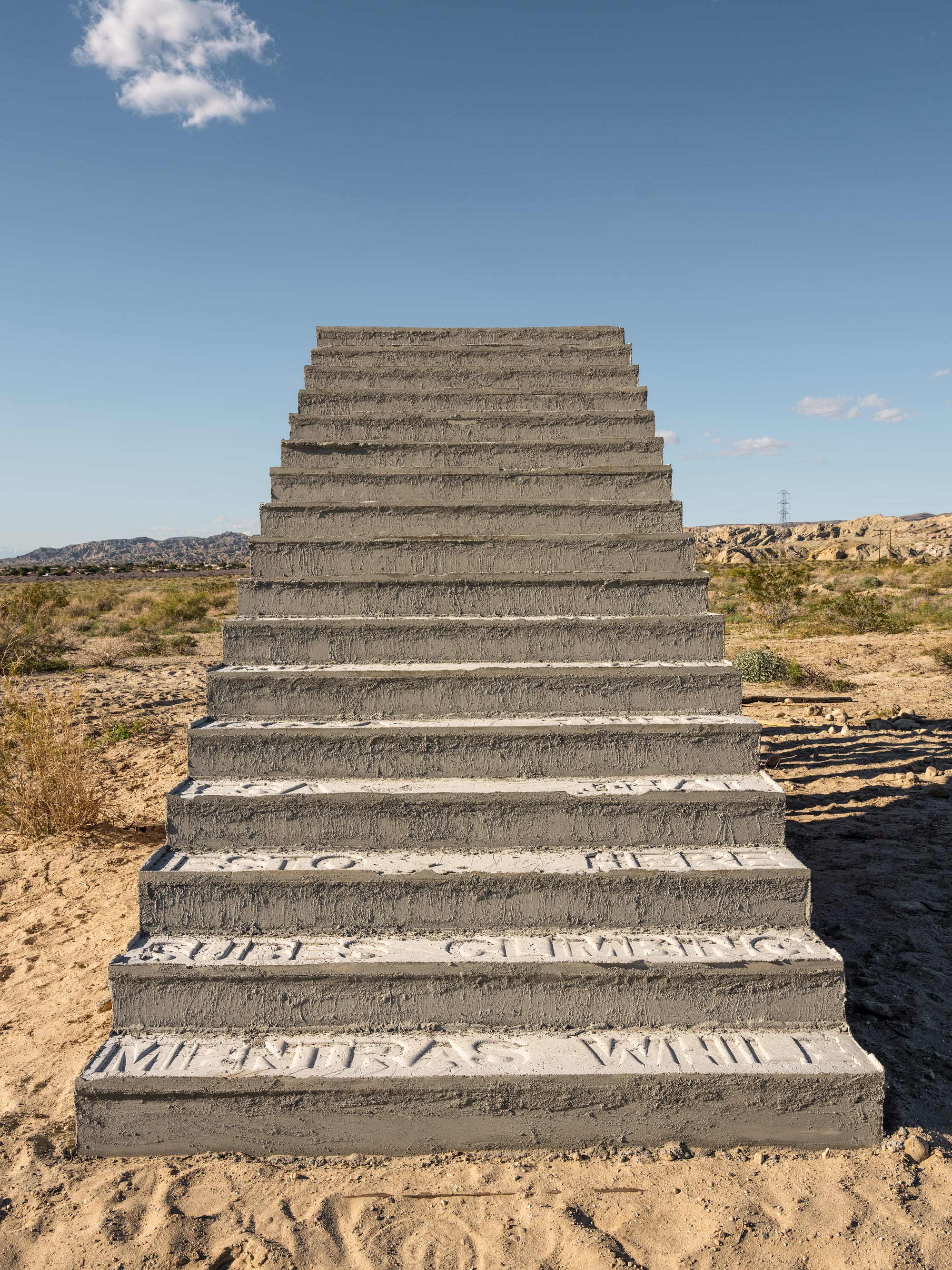
Several other works brought attention to fascinating sites near the eerily dead, man-made beach town of the Salton Sea, on which several works are located. The town is an environmental disaster, a toxic site once filled with test bombs. It feels like the end of the world. The municipality itself is called Mecca, a testimony to the early developers’ importation of date palm trees from North Africa and their Orientalist fantasies. On a vacant field covered with the remains of the aquatic life of the Paleolithic Lake Cahuilla that once covered the area, the Colombian artist Ivan Argote created “A Point of View,” a sculpture made of concrete staircases looking onto the sea and horizon, their geometric forms and circular position alluding to pre-Colombian and Brutalist architecture. Artist and architect Steve Badgett and Steve Taylor imagined the Terminal Lake Exploration Platform, a research raft for the study of the artificial lake and its environmental traces. Studio Museum and Yale alum Eric Mack wrapped a run-down auto repair shop in a patchwork of Missoni fabric, left to hang and flap in the wind like the last remnant of a fallen civilization. And local muralist Armando Lerma painted striking animal figures inspired by Native iconography on an elevated water tank, a monumental frieze to the nomadic stories and original peoples of the American desert.
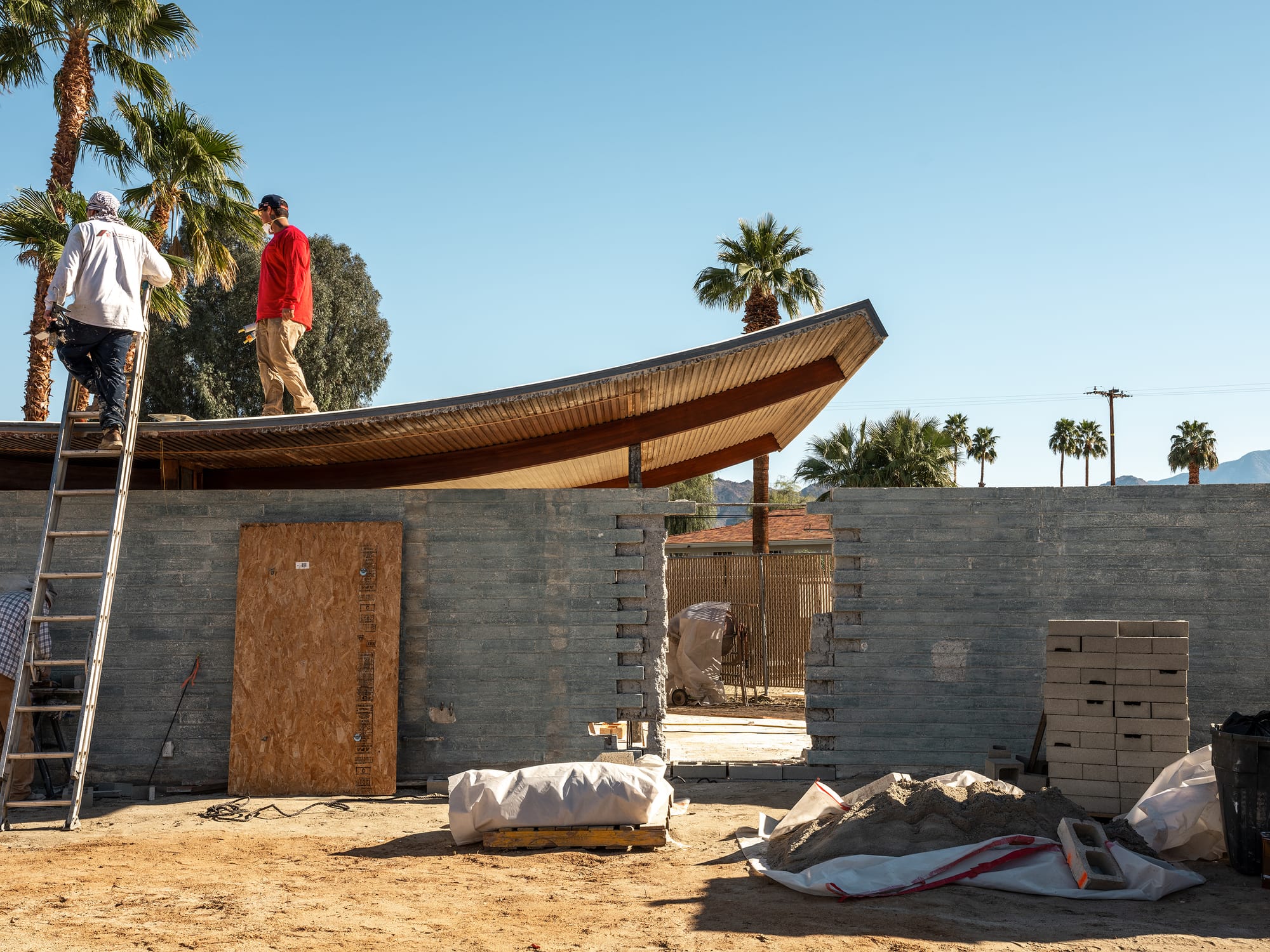
Sunnylands, a grand Modernist residence of mogul Walter Annenberg, is another desert landmark with a murky historical and political past. It was known as the “Camp David of the West” and has hosted presidents from Eisenhower to Obama, the Shah of Iran, and Margaret Thatcher. Egyptian artist Iman Issa installed a cryptic sculpture in its manicured garden, “Surrogates, a film about things to be used, in order of appearance, by self or others, for touching upon larger, insidious, or different things,” where a sinuous pipe feeds into a miniature cactus arrangement, in a surrealist setup that evokes the absurdity of geopolitical connections and exploitation of natural resources. Not too far, in a tight compound of brownish residences, the duo Postcommodity installed a sound piece where six channels fill a construction site with droning layers of noise and chatter. The artists captured reflections on the anxieties of life in the desert and Modernism, uncovering the colonial impulse of the expansion on native territories and the architectural commodification of its landscapes into sites of conspicuous consumption and pleasure.
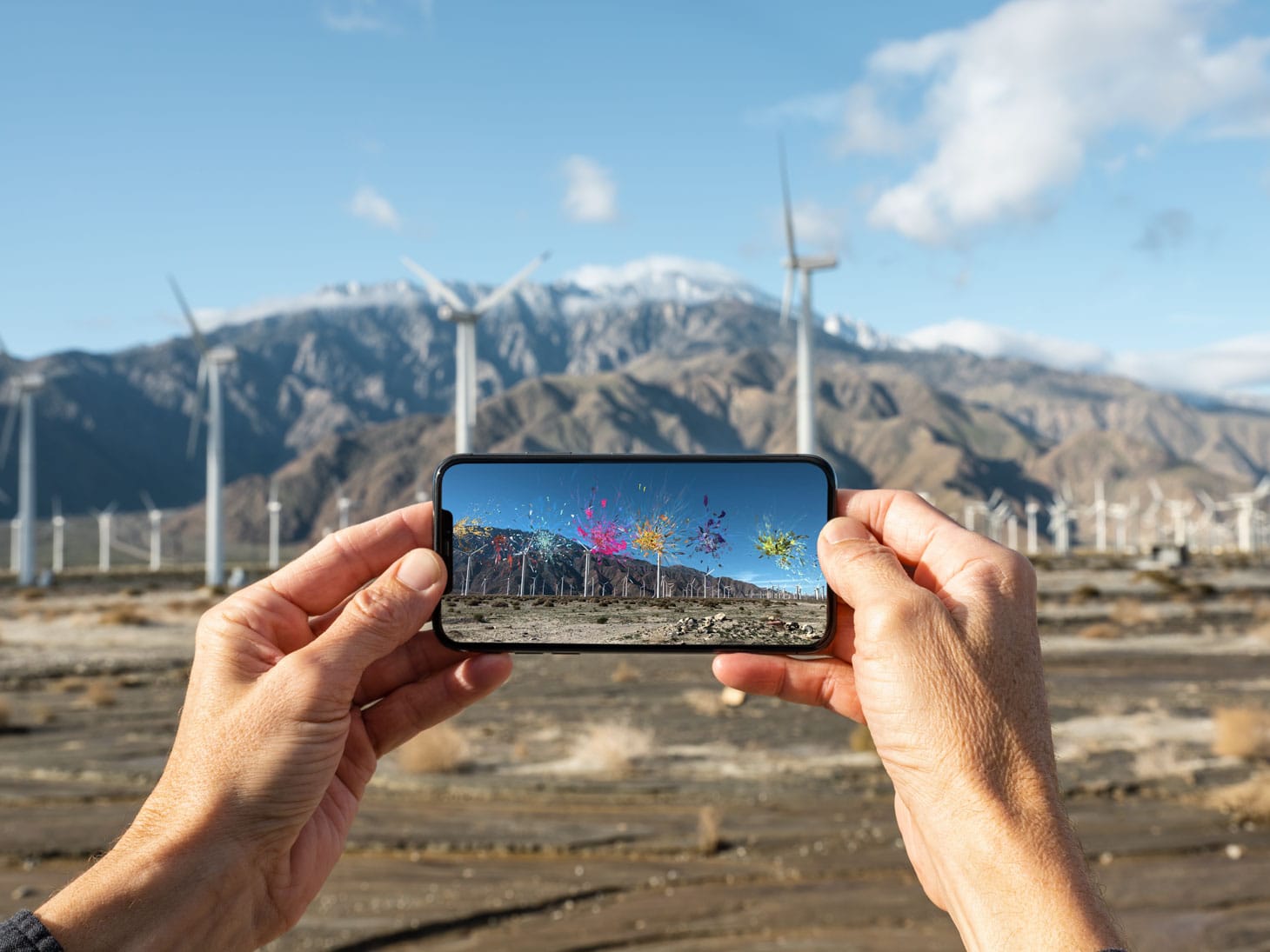
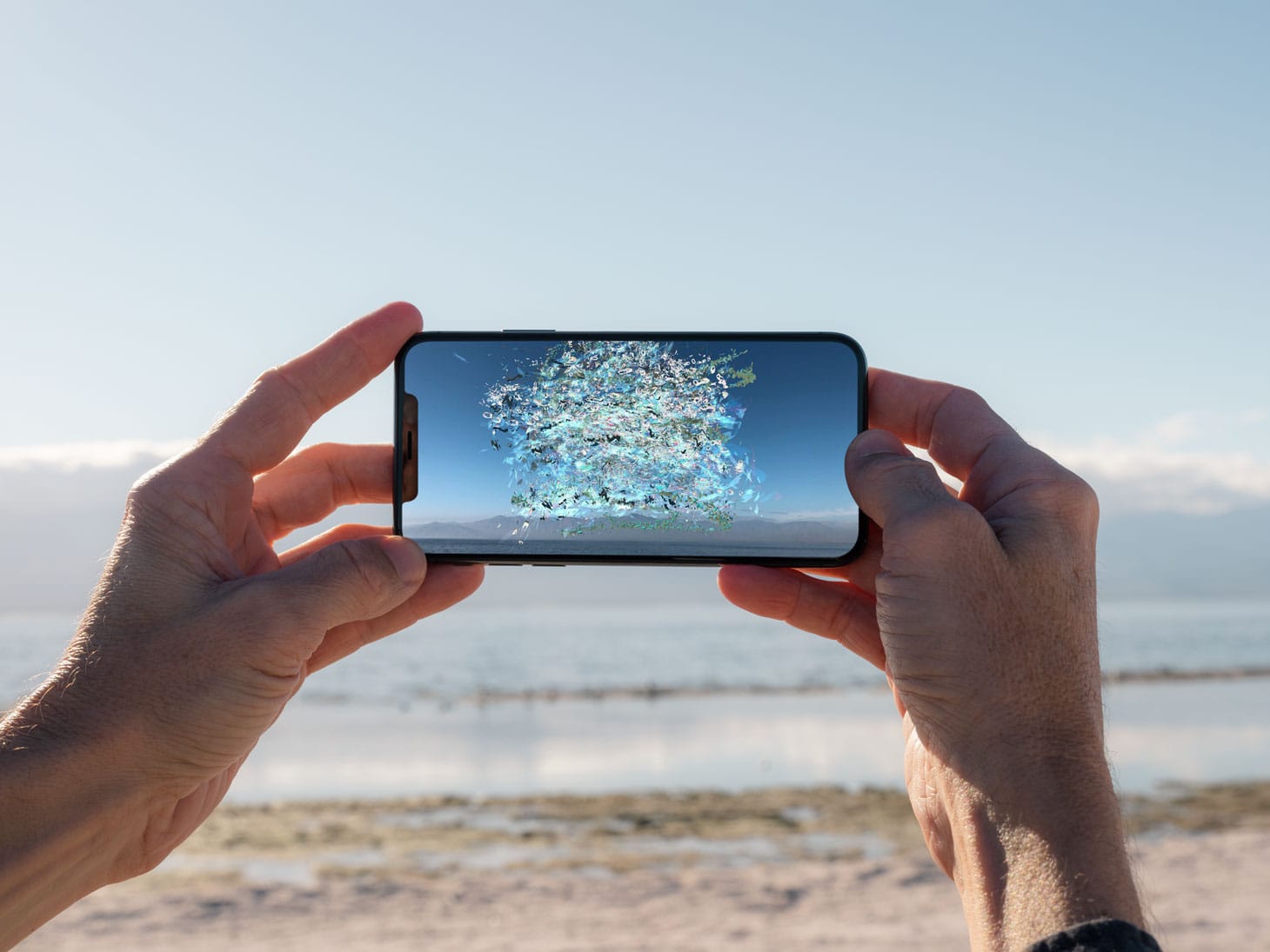
Norma Jean’s “Shybot,” timed to be released at the first edition of Desert X and since lost and found in the desert, was launched at the Mexican border on Sunday, February 10, as a provocative commentary on borders and transnational understanding. The artist trespassed into Mexico to fetch it back. It was the final note of the inauguration program’s urgent call for environmental awareness, cross-cultural understanding, intellectual and artistic experimentation, and the rereading of historic sites through site-specific art. While some of the works’ candor and earnestness sometimes failed to be matched with formal and aesthetic impact, and while the connection with, and progression from, the art historical legacy of the visionaries of Land Art wasn’t always clear, the curators’ herculean project and fresh energy offered a much-needed jolt of community and thought away from the hyper-commercialized art capitals — one week ahead of the inaugural edition of Frieze LA and two months before the Coachella music festival.
Desert X, curated by artistic director Neville Wakefield with co-curators Amanda Hunt and Matthew Schum, runs through April 21, 2019 in Coachella Valley, California.
The author attended a press trip hosted by the Palm Springs Bureau of Tourism and Desert X.



